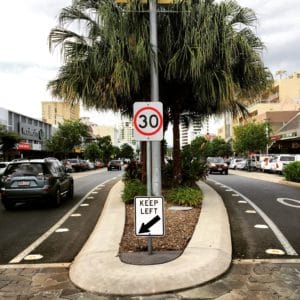

It’s continually being drummed into us to keep to the speed limit when driving because if you go over it you’ll be more at risk of killing yourself, other drivers and pedestrians. Basically the faster you go, the bigger the risk. According to recent studies on South Australian roads, which had their road speed limits lowered from 110 km/h to 100 km p/h in 2003, there is data to back up this point.
After looking at 20 years of crash data, South Australia’s Centre for Automotive Safety Research concluded that 15 lives were saved and a further 230 serious casualties avoided by cutting the speed limit. By reducing travelling speed, they say, the risk of crashing and the severity of injury are definitely lowered. But advocates of higher speed limits say lowering road speed does little to help the problem of road casualties.
This side of the argument enforces road design and driver education, rather than the reduction of speed limits. Case in point would be a country such as Germany where autobahns have no speed limit and cars travel safely at speeds of up to 130 km/h and more. Which suggests that speed itself is not the cause of accidents on Australian roads but bad highways, poor driving skills, fatigue and inattentiveness.
Over the last 10 years, there has been a 24% increase in the number of vehicles registered in Australia. With so many more vehicles on the road it might be surprising to learn that road fatalities have dropped by 60% in the last 30 years. Part of this equation has been the development and implementation of traffic calming devices on our roads.
Lowering speed limits in a city makes good sense when drivers are travelling short distances. But for country roads lowering speed limits may in fact increase driver frustration and lead to dangerous overtaking manoeuvres. Still, whichever way you look at it you can’t argue with physics:
A vehicle braking at 110 km/h needs 21 percent more kinetic energy to brake than one travelling at 100 km/h.
Ten percent more distance is covered if travelling at 110 km/h, and the car needs an extra 14 metres to stop.
In overseas countries that have lowered the speed limit such as Sweden, the new speed limits have helped to reduce fatalities if not serious injuries. Despite the lower limit, it has been found that drivers don’t reduce their speeds by the required 10 km/h but only between 2 to 3.5 km/h. However, in Norway traffic authorities lowered speed limits by 10 km/h on high-risk roads in 2001 and even though driver speed was lowered by only 1.6 to 4 km/h, it has lead to a 40 percent drop in driver fatalities.
These cases, along with the South Australia data, appear to prove that small changes in speed can have a dramatic effect on safety but that driver education and road design also need to be factors when it comes to saving lives on our roads.



For 10 years, our focus has been on one thing: to provide one style of product and to do it well.
Our wheel stops, speed humps and rumble bars meet Australian Standards, don’t fade, and we’ve never needed to replace one.

For 10 years, our focus has been on one thing: to provide one style of product and to do it well.
Our wheel stops, speed humps and rumble bars meet Australian Standards, don’t fade, and we’ve never needed to replace one.